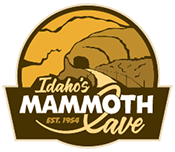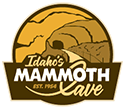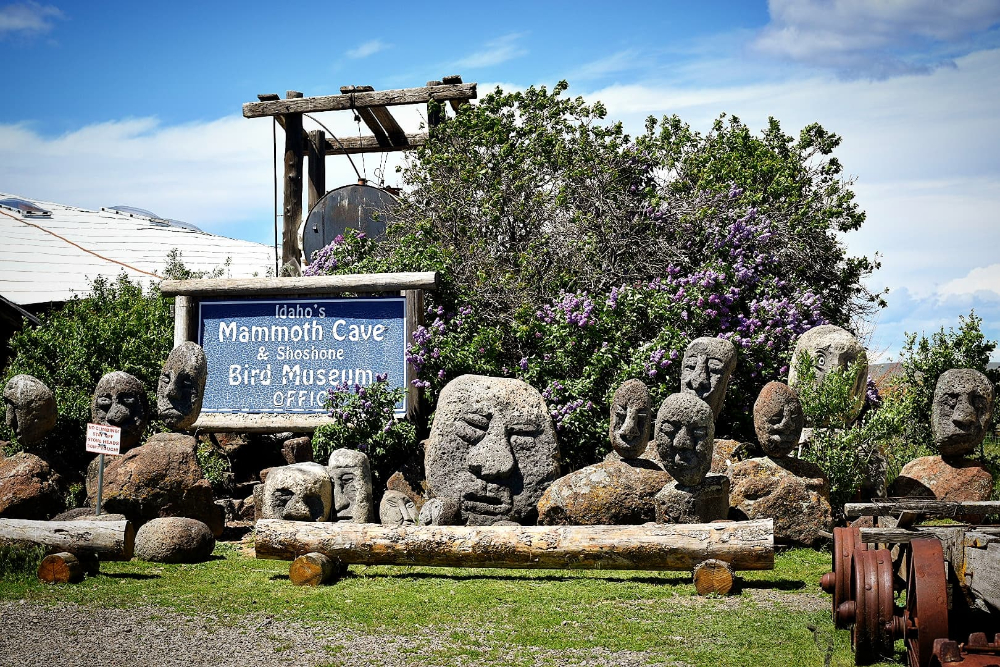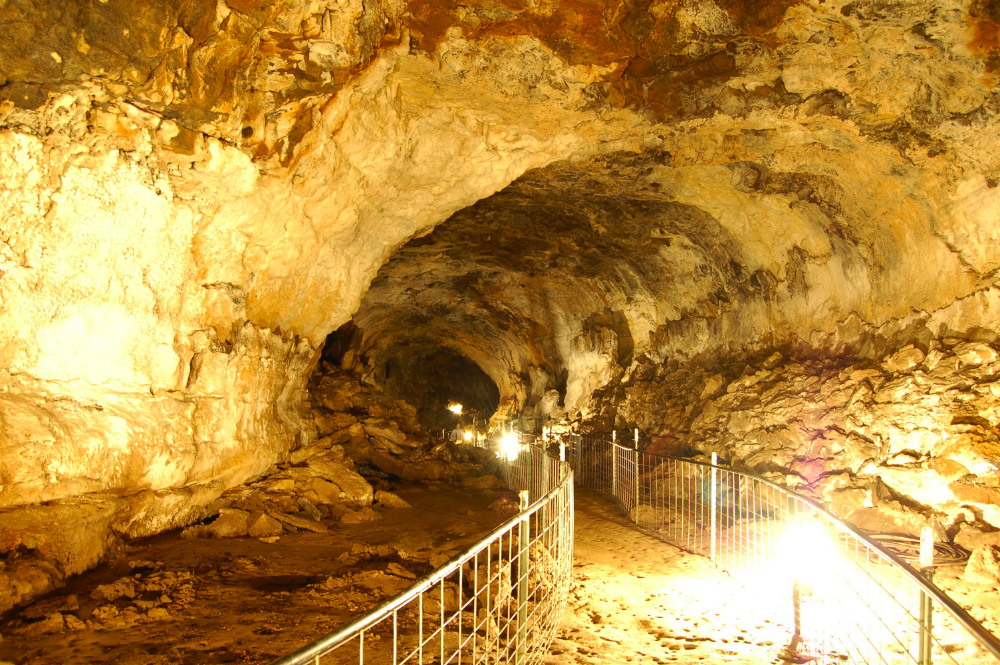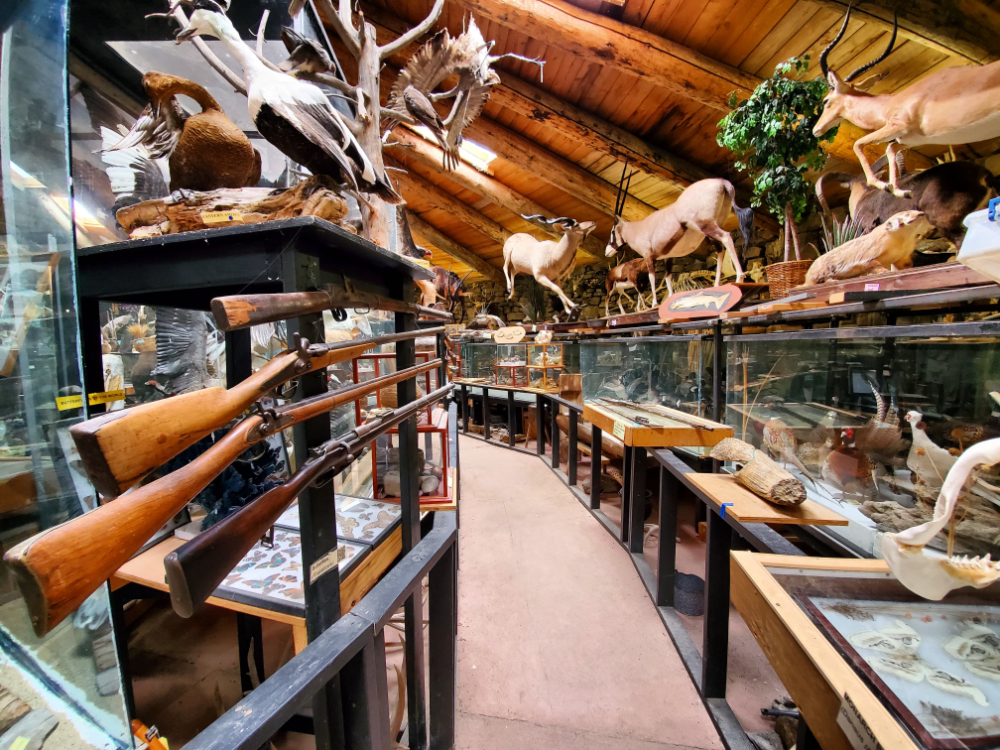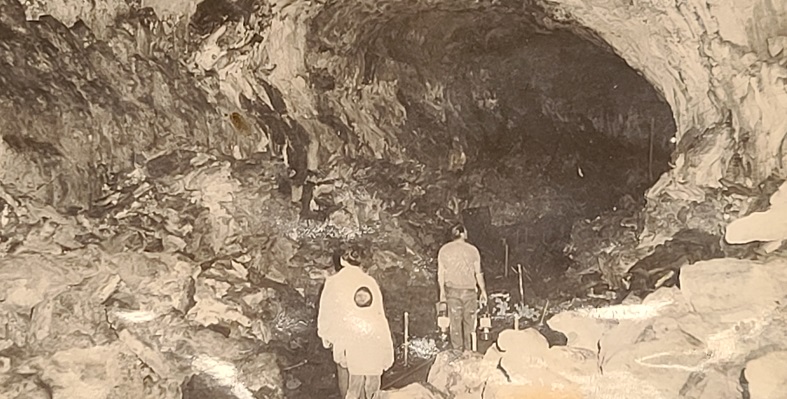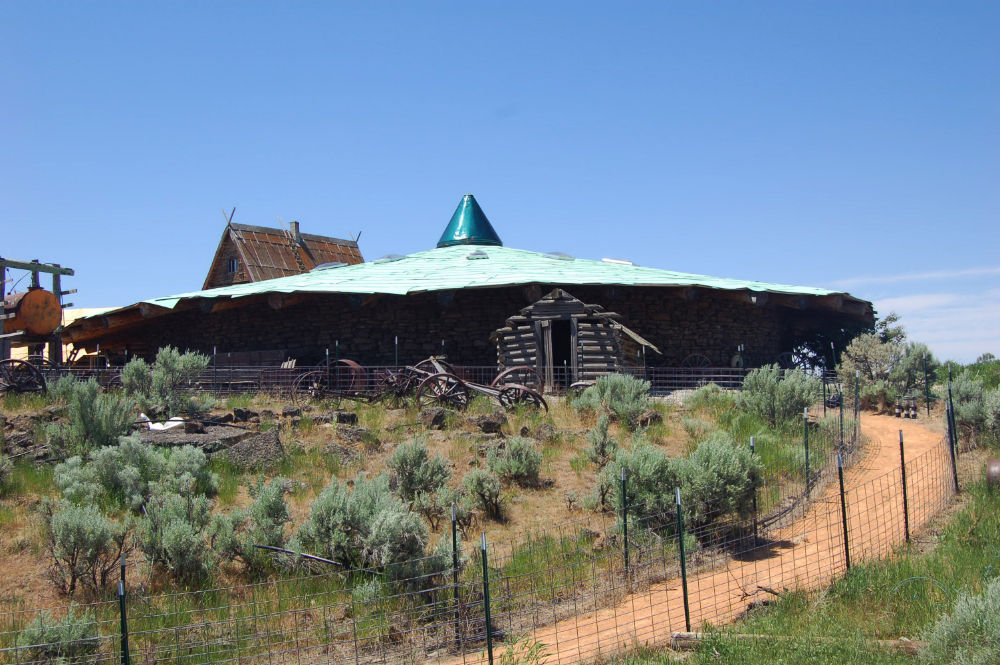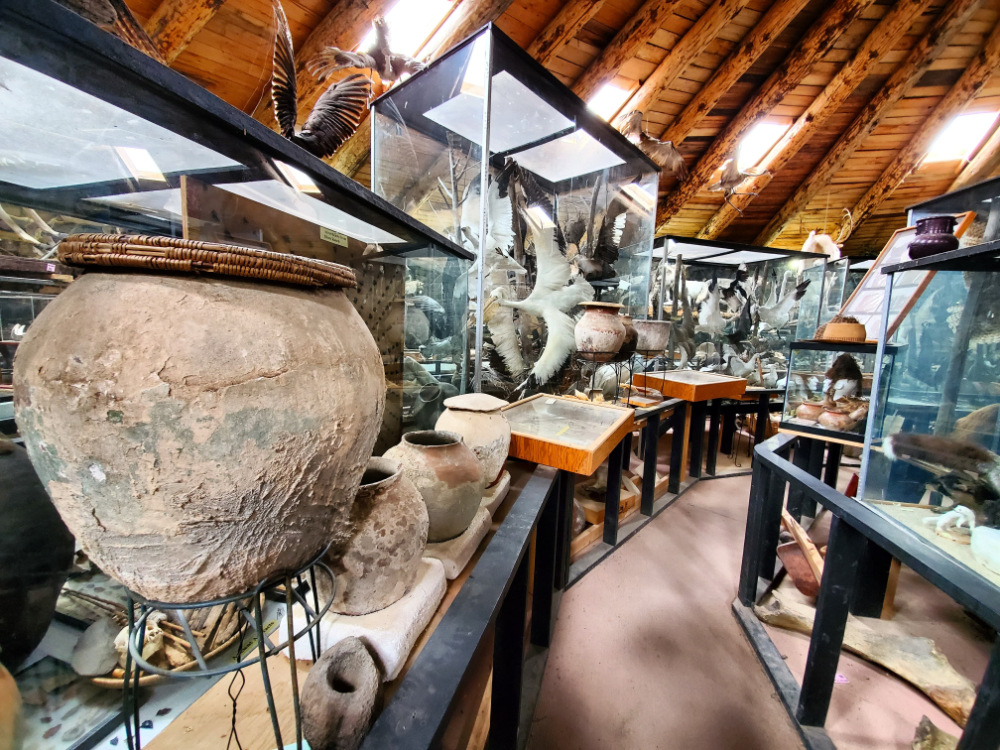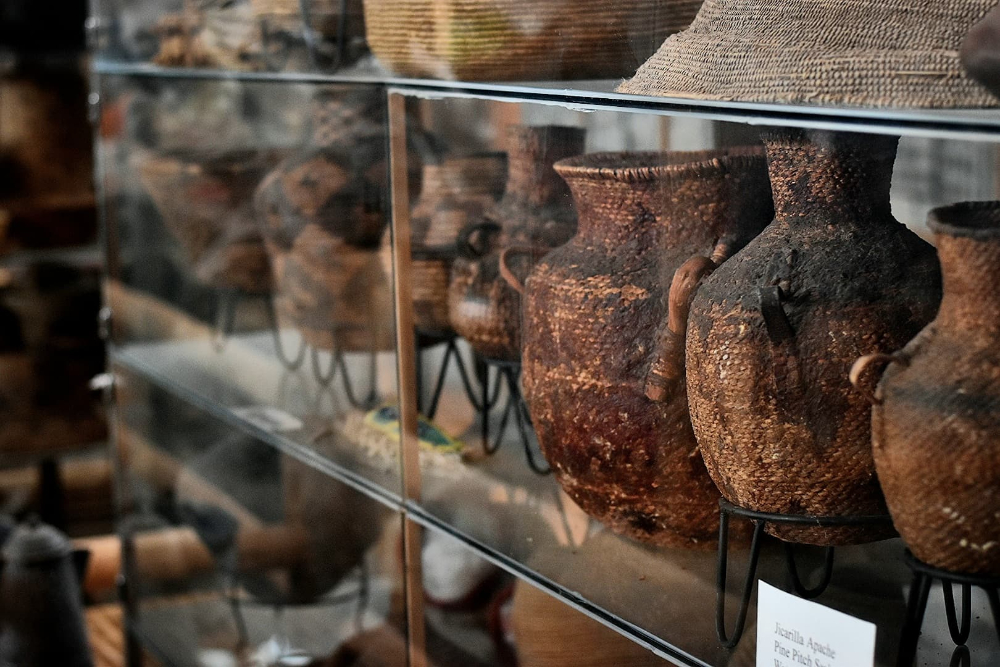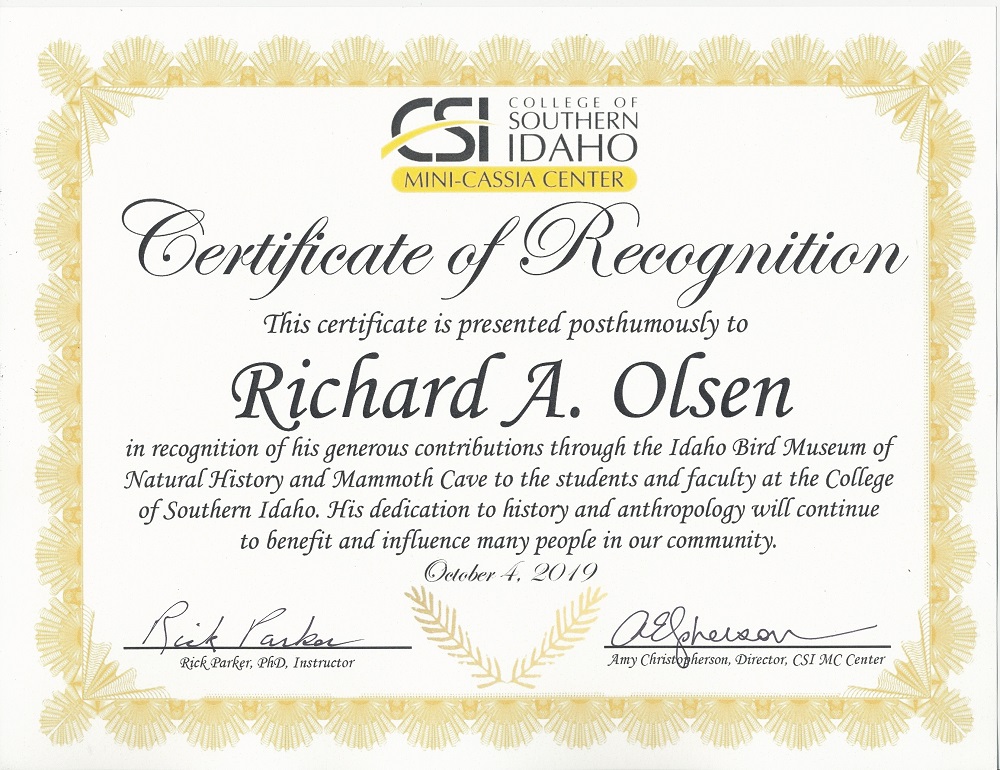Nestled among the rugged desert landscape of southern Idaho, just seven miles north of the small town of Shoshone, lies a hidden gem that is truly a diamond in the rough.
While the “Cave” sign, with its bold, weathered letters, may not immediately catch your eye as you pass by on Highway 75, you will discover a geological wonder that continues to captivate visitors with its rugged beauty and rich history if you take the time to venture off the beaten path.
The desert outside of Shoshone is a place of contrast, where ancient lava flows have left their mark on the land, and harsh winter winds and snow give way to vibrant wildflowers and lush sagebrush. It is a land that has been shaped by the forces of nature and has been home to many Native American tribes over the centuries. Today, this remote desert landscape can be seen in the ancient ash and volcanic rock layers that can be found throughout the area.
Amongst these geological treasures, there is one particular site that stands out. A stark monument of the past, called Idaho’s Mammoth Cave that awaits in pitch-black silence, holding within its cavern walls memories of ancient and not-so-long-ago times. The cave is a window into the past and a testament to the power and unforgiving wrath of nature. It is a must-see destination for anyone who appreciates the natural beauty of the American West and wants to experience the region’s rich history.
Idaho’s Mammoth Cave – A Stark Monument of the Past
Idaho’s Mammoth Cave is a geological marvel that is truly one of a kind. As one of the largest volcanic caves open to the public, it allows visitors to explore a unique and awe-inspiring underground landscape. The cave is a product of volcanic activity, formed millions of years ago when a powerful eruption shook the land, and rivers of molten lava flowed out of the earth, filling the valley with lava estimated to be six hundred feet deep.
During this massive volcanic event, a natural wonder gave birth leaving behind a hollow tube that would later be known as Idaho’s Mammoth Cave. Over time, a section of the cave collapsed, providing an opening to the outside.
Millennia later, many Shoshone and Bannock tribes would use the cave for shelter and as a place to preserve their meat in cool temperatures. The remains of various mammals, such as the massive short-face bear, as well as ancient camels, buffalo, and small horses, have been discovered within its dirt floor.
Idaho’s Mammoth Cave is among only a few caves in the world with growth on the walls called cyanobacteria, which are ancient living organisms that date back almost four billion years to a time when the Earth’s climate was vastly different. Today, these organisms give the cave walls an otherworldly appearance, resembling pure silver. In addition to the cyanobacteria, mineral deposits in various colors, including silver, gold, orange, and deep red, add much beauty to the massive cavern.
In 1902, early settlers and sheepherders stumbled upon the cave opening. They used makeshift torches to enter and left their mark by writing their names on the cave walls with charcoal from their torches. Portions of these works remain to this day.
Olsen, The Explorer
In 1954, a young man named Richard Arthur Olsen made a discovery that would change his life forever. While hunting bobcats in the desert outside of Shoshone, Idaho, he stumbled upon a small entrance to this massive cavern that had been forgotten by time.
“I was with my high school sweetheart Vinita, and I talked her into exploring the cavern with just a single flashlight. As my excitement and imagination grew, expecting to find treasure at any moment. Vinita, scared and unhappy, cried the whole way in and the whole way out.” – Richard Arthur Olsen.
But for Richard, it was love at first sight, and he decided he wanted to share it with the world. As the founder of Idaho’s Mammoth Cave, Richard Olsen was a one-of-a-kind dreamer with an intense love for nature, history, and the outdoors. He was an avid survivalist and self-educated archaeologist who spent his life traveling the globe in search of unique and fascinating specimens to share with others.
In addition to the cave, Olsen founded the Shoshone Bird Museum of Natural History, which houses his vast collection of natural history specimens, including fossils, rocks, gemstones, and cultural artifacts from around the world. As a taxidermist, Olsen was skilled in the art of preserving and displaying wildlife. The majority of the mounted animals on display in the museum were the result of his own hard work and dedication.
Through Richard’s passion and enthusiasm, he instilled in visitors a deep appreciation for nature and the courage to follow one’s dreams. Today the museum serves as a testament to Olsen’s incredible legacy and his dedication to educating and inspiring those who visit from around the world.
An Apocalypse That Almost Happened
When Richard Olsen homesteaded Idaho’s Mammoth Cave in 1954, he thought it would be a great place to grow and store mushrooms before turning it into a historical landmark where he would eventually build his museum. By that time, however, the Cold War had made its way home to America. That’s when the Lincoln County Civil Defense director in Shoshone, Idaho, thought Richard Olsen’s cavern would be the ideal location for housing thousands of people in case the unthinkable happened.
During that time, Richard Olsen was offered a good gravel road from U.S. State Highway 75 in exchange for using the cave as a nuclear fallout shelter. The Idaho Bureau of Disaster Services tested Idaho’s Mammoth Cave. It was rated 1,000+ – the highest score for nuclear fallout protection – and enlisted Richard Olsen’s help in building a platform inside the cave to hold water and supplies. These supplies were then stocked in the cave by passing them down a human chain of local Shoshone High School students.
Rations included crackers, wafers, candy, toilet paper, sanitary napkins, water containers, and carbohydrate supplements that would last over 8,000 people for two weeks. However, no drills were ever conducted. Instead, the Civil Defense officials knew they’d have to act fast if a nuclear attack ever occurred.
At the time, Richard Olsen was told that prevailing winds would sweep radioactive fallout to the Shoshone, Idaho area within two to three hours after a nuclear blast over the nearby Mountain Home Air Force Base, located 75 miles west of Idaho’s Mammoth Cave.
If the target were somewhere else, like Portland, Oregon, the fallout would take approximately one day. Sixty-eight years later, the giant volcanic cavern of Idaho’s Mammoth Cave remains a popular tourist destination between Twin Falls and Sun Valley, Idaho. While the supplies the cave once held for nuclear survivors are long gone, Idaho’s Mammoth Cave remains a potential fallout shelter for residents of Blaine Camas and Lincoln Country residents in case a nuclear disaster ever strikes.
Building a Home & Natural History Museum
Next to the cave, Richard built a home, a four-story A-frame made entirely of wood scraps from a local sawmill. With sweat, blood, and tears, along with the help of his oldest children, the house went up, and the remnants of it still stand today.
Over time, Richard built and filled the Shoshone Bird Museum of Natural History to the brim. The museum’s four-foot thick, ten-foot high walls were built entirely of natural uncut lava rock, stacked one at a time. Forty-four ponderosa pine trees, each fifty feet long, and fifteen large cottonwood trees hold up the roofing, which is covered with belting from a Borax mine in California. Today, it is one of the largest, privately owned museums of its kind in the Northwest.
Unlike government and state museums that feature large, expensive buildings and relatively few things to see, the Shoshone Bird Museum of Natural History is packed full. The collection features four generations of Olsens who trusted Richard to showcase their collections.
The museum features birds from all corners of the globe, meticulously mounted and displayed to showcase their intricate colors and patterns. Also on view are butterflies of the world, fish and dinosaur fossils, animals from around the globe, pioneer artifacts, Stone Age artifacts, American Indian artifacts, and thousands of artifacts from cultures ranging from Africa to South America, among many other displays. This wealth of exhibits has earned the museum the nickname “The Smithsonian of the Desert” and is a must-see destination for any natural history enthusiast.
Honoring Olsen’s Vision
Today, Idaho’s Mammoth Cave is a monument of the past that welcomes thousands of tourists each year from around the world. Visitors are eager to see one of the largest volcanic caves open to the public and to seek relief from the glaring desert sun to its 40-degree subterranean temperature during the summer.
Carrying on their founder’s mission to educate those who want to learn more about natural objects, worldwide histories, and cultures of the past, Idaho’s Mammoth Cave recently expanded with the opening of a second museum, dubbed the Richard Arthur Olsen Museum of Natural History that he planned to share before his passing in 2019. This new addition to the complex offers visitors an even more comprehensive view of the natural and cultural history of the world. Exhibits include an amazing array of fossils, rocks, gemstones, animals, and cultural artifacts worldwide.
According to managing owner Katie Ann Olsen:
“We are overjoyed to be able to share this wonderful collection that benefits local communities and visitors from around the world. Since our father’s passing, it has been our number one goal to carry on his legacy of love for nature and history. He was fascinated by the world around him, and his desire to share the things he found and collected led him to plan this additional natural history museum. He was a great blessing to us all, and his legacy needs to live on as a testimony of who he was.”
The cave has a self-guided tour that takes approximately half an hour, walking a quarter-mile in and a quarter-mile out on a well-established trail. Lanterns are provided, but flashlights are always fun to bring along. Wearing a light jacket and good walking shoes is recommended because the cave keeps a consistent 41 degrees throughout the year. For more experienced spelunkers, special permission may be granted to access to the cave’s innermost reaches, extending a quarter-mile past the designated stopping point.
For more information or to plan a visit, visit idahosmammothcave.com or call (208) 329-5382. As one of the most popular Idaho attractions, it’s a must-see destination for anyone interested in natural history and the science of geology.
